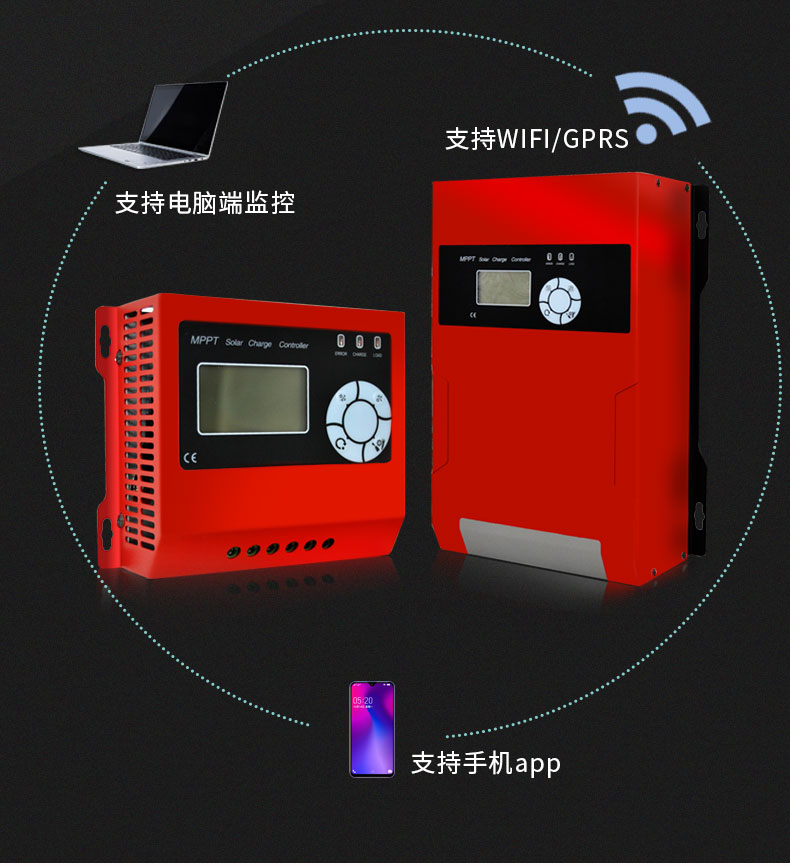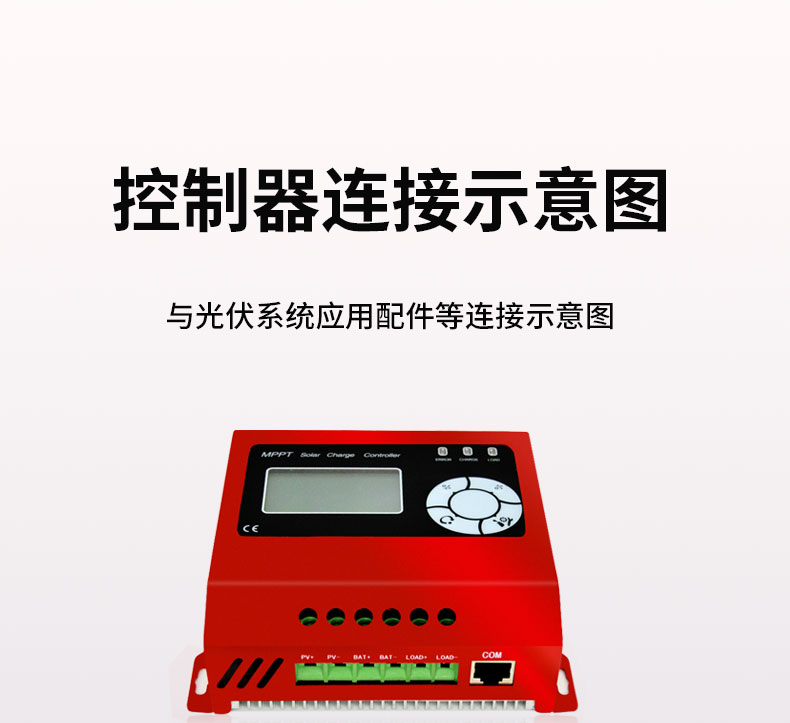COMPANY NEWS
NEWS
Difference between PWM and MPPT controller--How to choose?
In the solar off-grid system, the photovoltaic controller mainly converts the electricity from the photovoltaic modules and stores it in the battery; it is also used to protect the battery from overcharging and overdischarging and prolong the battery life, so the solar charge and discharge controller is essential. Short. At present, there are two main technical routes for the controller: Pulse Width Modulation (PWM) and Maximum Power Point Tracking (MPPT).
1. PWM controller
Features of PWM Controller
1) The main circuit of the controller usually adopts a common anode design, which is composed of one group of power switch tubes and one group of photovoltaic anti-reverse tubes. This electrical structure and control are simple. PWM--pulse width modulation, it is a direct charging state in general state, and the calorific value is small. Chopper control when working in constant voltage and constant current stages to limit charging voltage and current. This design requires a small voltage difference between the photovoltaic panel voltage and the battery voltage.
2) PWM uses high-performance microprocessor output to control the analog circuit, and uses three stages of strong charge, balanced charge, and float charge to charge the battery.



2. MPPT controller
Features of MPPT Controller
1) The main circuit of the MPPT controller is usually designed with a negative electrode, which is composed of an input capacitor, a group of photovoltaic anti-reverse tubes, a group of BUCK circuit (or BOOST circuit) and an output capacitor. It has been working in the chopper state, generally working in the range of large voltage difference between photovoltaic and battery (usually 2~8).
2) The MPPT controller, compared with the PWM controller, increases the inductance and power diode, so the function is more powerful. MPPT solar controller refers to a solar controller with the function of "Maximum Power Point Tracking". The MPPT solar controller can detect the voltage and current of the solar panel in real time, and continuously track the maximum power (P=U*I ), so that the system always charges the battery with the maximum power, the MPPT tracking efficiency is 99%, and the power generation efficiency of the entire system is as high as 97%.
3) The MPPT controller is controlled by a high-performance microprocessor, which has better protection performance and charging performance. Use strong charge, balanced charge, and float charge to charge the battery in 3 stages.
3. How to choose PWM and MPPT controller
Both PWM and MPPT controllers have their own unique advantages and disadvantages, and which one to choose depends on the design characteristics of the solar photovoltaic array, cost, and conditions such as the external environment. When we choose, we need to focus on the following factors:
1) MPPT controllers are more expensive than PWM controllers, however MPPT controllers have higher charging efficiency, especially in cold climates. The MPPT controller also supports wired series connection of more photovoltaic (PV) panels (high voltage drop), which is also a big advantage. In this case, the cross-sectional area of the connecting cable can be greatly reduced, resulting in a corresponding reduction in the overall cost of the system.
2) Compared with the MPPT controller, the biggest disadvantage of the PWM controller is the efficiency. The PWM charge controller cannot charge the maximum power generated by the photovoltaic (PV) array, and its overall efficiency is usually between 65-85%. , on the other hand the MPPT controller will ensure that the solar array is always in the best operating condition. In some cases, such as when the weather is cold, the charging efficiency provided by the MPPT method is 30% higher than that of the PWM method (high charging efficiency).
3) PWM mode technology is mature, the circuit is simple and reliable, and the price is cheap, but the utilization rate of components is low, which is suitable for small systems, and the temperature range of the solar charging unit is 45-75 °C. The MPPT controller is a better choice for large systems, and its higher efficiency means greater economic benefits. In addition, the MPPT controller allows users to obtain the maximum power from the photovoltaic (PV) array, which has obvious advantages when there is additional power demand and the limited space cannot expand the size of the PV array.


